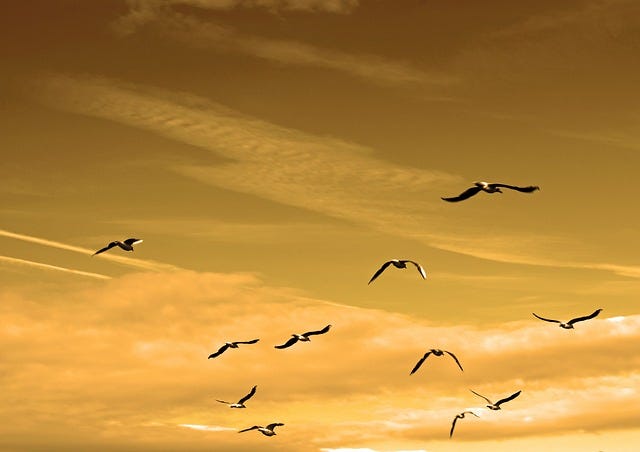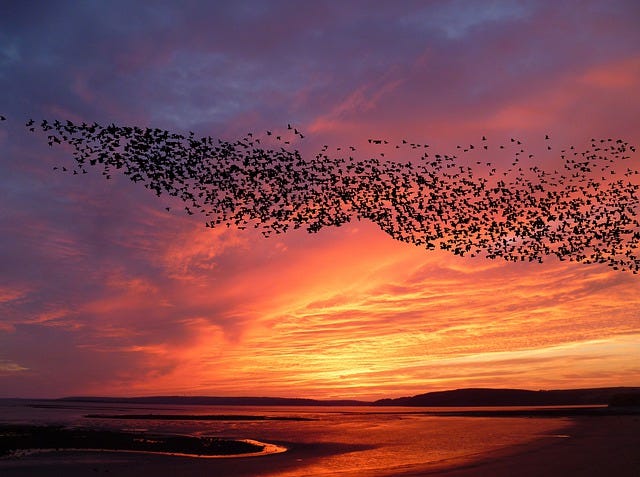On the Wing
Christina Rossetti
1830 –1894
"Once in a dream (for once I dreamed of you)
We stood together in an open field;
Above our heads two swift-winged pigeons wheeled,
Sporting at east and courting full in view:—
When loftier still, a broadening darkness flew,
Down-swooping, and a ravenous hawk revealed;
Too weak to fight, too fond to fly, they yield;
So farewell life and love and pleasures new.
Then as their plumes fell fluttering to the ground,
Their snow-white plumage flecked with crimson drops,
I wept, and thought I turned towards you to weep:
But you were gone; while rustling hedgerow tops
Bent in a wind which bore to me a sound
Of far-off piteous bleat of lambs and sheep."
As we delve into the works of renowned poets Christina Rossetti and Meghan Lindsay, it becomes clear that our existence is only temporary and that even the beauty of the natural world will wither; this is a central theme of Rossetti's poem "On the Wing." In the first poem, the speaker observes a bird in flight, freezing a moment of freedom and grace. This imagery lays the groundwork for contemplating movement, evolution, and impermanence in life.
Rossetti's language is a masterstroke, particularly in portraying the bird soaring in the heavens. The poem deftly juxtaposes the bird's weightlessness and velocity with the solidity and permanence of the earth below, underscoring the theme of impermanence vs permanence. The bird, a symbol of the spirit or soul, glides effortlessly in the sky, while the earth, a representation of the physical world and its limitations, remains steadfast and unchanging.
In her poem, Rossetti employs a rhythmic and melodic voice, echoing the swift and effortless movements of the bird. This musicality not only enriches the reader's journey with the bird but also offers a fleeting taste of the beauty and freedom that the bird itself experiences. The bird's literal descent to earth contrasts with the imagery of the sky and open space, evoking a sense of boundlessness.
"On the Wing" is a meditation on the human experience, particularly the tension between hope and despair. The bird's flight represents the dreams and ideals that we all wish to chase, and its subsequent arrival on Mother Earth is an allusion to reality and death. This duality, the temporal rubbed raw by the eternal, is a recurring theme in Rossetti's work.
In the few closing lines of "On the Wing," we see this physical turning towards the metaphysical. The bird's flight becomes a metaphor for the soul's journey from birth through life to death and beyond. Life is brief, Rossetti says later in the poem, and earth-imprisoned, yet the spirit feels and will continue to feel beyond the temporal confines. This poem carries the reader to a point where there is still hope for surrender and the still-open door that loss occupies.
Freedom is a precious thing, and the face of it leaves quickly. It is beautifully shown in Meghan Lindsay's poem "On the Wing." With imagery, rhythm, and metaphor, she meditates on the tension between freedom and constraint, aspiration and reality in a world with too many shadows. This poem speaks to the fundamental human experience; so is the lasting appeal of the poem, as it contains meanings to be meditated over, mulled, and delivered as some sacred wisdom casual workers behind the counter take home.







I've always loved this poem Allan. Thank you for sharing. I am thinking of you..